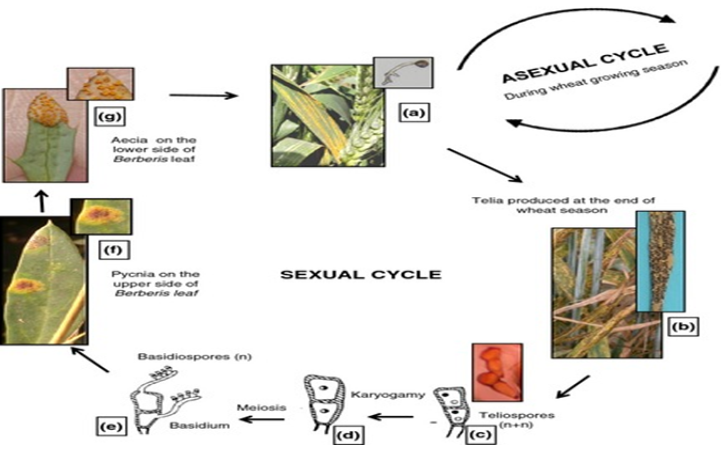Unraveling the Genetic and Geographic Diversity of Puccinia striiformis f. sp. Tritici (Pst) Populations for Effective Control of Stripe Rust in Global Wheat Production
Unraveling the Genetic and Geographic Diversity of Puccinia striiformis f. sp. Tritici (Pst) Populations for Effective Control of Stripe Rust in Global Wheat Production
Amir Afzal1*, Sairah Syed1, Hafiz Husnain Nawaz2, Ruqeah Mustafa1, Marjan Aziz1, Madeeha Khan1, Azra Khan3, Uzma Javed1, Attiq Ur Rehman4, Rubab Altaf 5 and Qamar Shakil6
Comparison of shriveled grains and healthy grains infected by stripe rust.
Disease cycles of Puccinia striiformis f. sp. tritici: (a) Insights into uredinial stage formation and epidemic progression; (b) Transition from Uredinial to Telial stage; (c) Teliospore production on wheat; (d) Karyogamy; (e) Formation on basidiospore production; (f) Basidiospore dispersal and disease initiation on Berberis spp. at the pycnial stages (g) and aecial stages on the upper and lower leaf surfaces of Berberis spp. (Ali et al., 2014).








